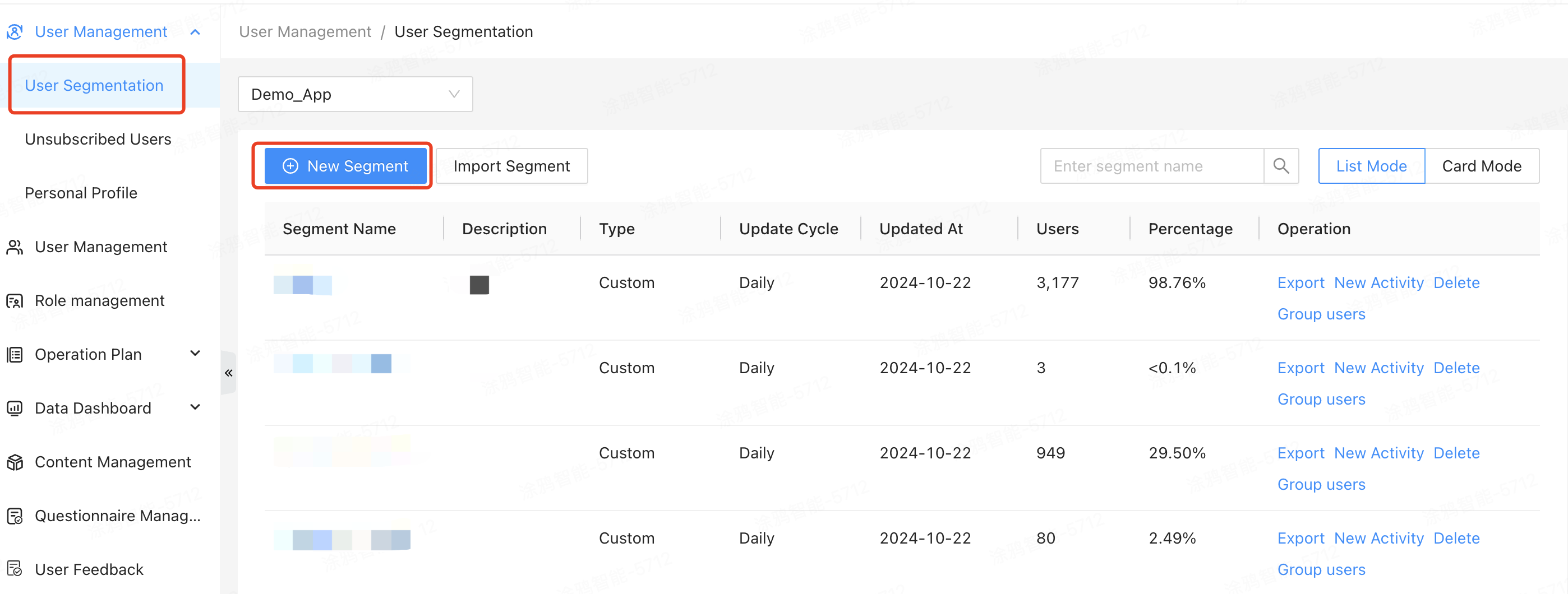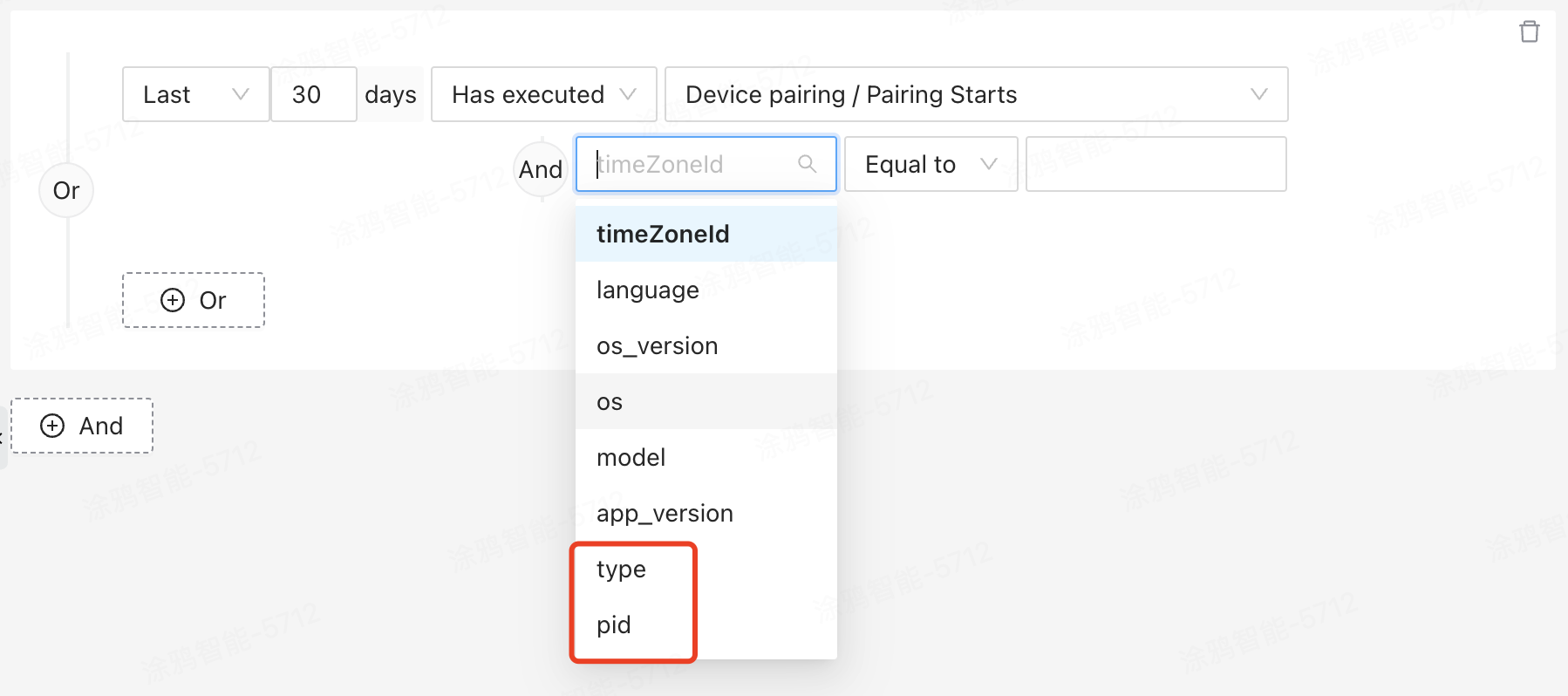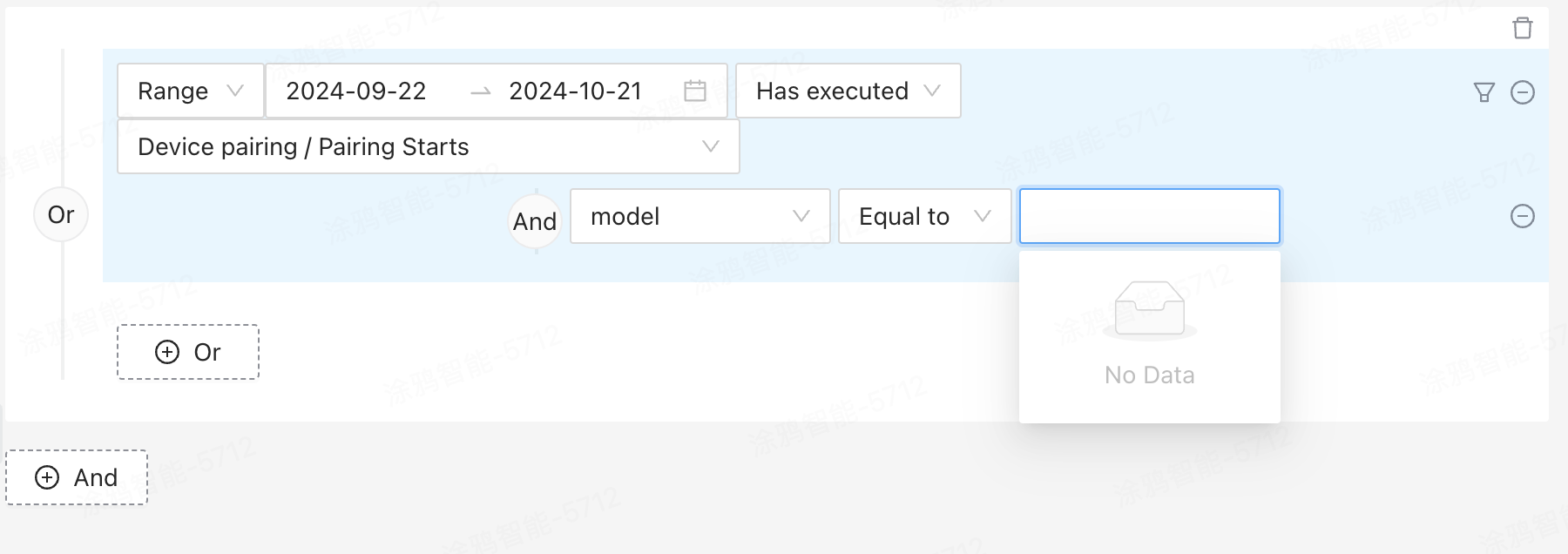Behavior Filtering
Last Updated on : 2024-11-07 01:58:21download
You can select desired user groups based on different user behaviors.
Procedure
-
Click User Management > User Segmentation > New Segment.

-
Click And in the lower-left corner of the page and select User Behavior.

-
Select Last or Range. Last is selected by default, and you can set the time range to last 30 days.

-
Select Range to set a custom time range. The time range supports a maximum of 30 days.

-
Click the event drop-down list and select events to filter users. Events support fuzzy search.
-
Click the filter icon next to the event drop-down list and define more specific events. Behavior parameters are in a logical AND relationship by default.

To ensure query performance, add no more than 10 behavior parameters in the AND or OR conditions.
-
Click And to switch to Or, and vice versa.

-
Click Estimate number of users in the lower part of the page to display estimated number of users on the right.
-
Click Save Segment, enter the group name and description, set the update frequency to Daily or One-time, and then click OK.
Behavior parameters
Behavior parameters are included in the message sent when the corresponding event is reported, including public parameters and custom parameters. Public parameters include timeZoneId, language, os_version, os, model, and app_version, and all other parameters are custom parameters.
For example, type and pid are custom parameters for the Pairing Starts event.

The enum values in the filter are obtained through event query. If no users trigger the corresponding event in the app, the filter will not include any enum values.

Behavior parameter selection
Select a filter and enter one or more values to select matched users.
Equal to or unequal to
Scenario 1: select a single parameter value
The system will perform an exact match based on the parameter values, searching for users that meets those conditions.
After you select a parameter value from the drop-down list, such as selecting Android for the os parameter, the system will analyze user behaviors in the last day. Specifically, the system will count the number of users who triggered the Smart page-mini program exposure event on the Android system and return the data as the estimated results.

Scenario 2: select multiple parameter values
-
If you select Equal to as the filter, parameter values are in a logical OR relationship.
After you select multiple values from the drop-down list, such as selecting 5.11.0 and 5.12.0 for the app_version parameter, the system will count the number of users who triggered the Pairing Starts event in the last day on an app whose version is 5.11.0 or 5.12.0 and return the data as the estimated results.
Recommended usage: Query users based on multiple label values.

-
If you select Unequal to as the filter, parameters values are in a logical AND relationship.
After you select multiple values from the drop-down list, such as selecting 5.11.0 and 5.12.0 for the app_version parameter, the system will count the number of users who triggered the Pairing Starts event in the last day on an app whose version is not 5.11.0 or 5.12.0 and return the data as the estimated results.
Recommended usage: Perform a reverse query based on all selected values, excluding users labeled with the selected values.
Contain or not contain
Scenario 1: select a single parameter value
The system will perform a fuzzy match based on the parameter values, searching for users that meets those conditions.
After you select a parameter value from the drop-down list, such as selecting 12 for the os_version parameter, the system will count the number of users who triggered the Pairing Starts event in the last day on an app whose operating system version is 12 and return the data as the estimated results.

Scenario 2: select multiple parameter values
-
If you select Contains as the filter, parameter values are in a logical OR relationship.
After you select multiple values from the drop-down list, such as selecting 12 and 13 for the os_version parameter, the system will count the number of users who triggered the Pairing Starts event in the last day on an app whose operating system version is 12 or 13 and return the data as the estimated results.
Recommended usage: Perform a fuzzy match based on multiple label values.

-
If you select Does not contain as the filter, parameter values are in a logical AND relationship.
After you select multiple values from the drop-down list, such as selecting 12 and 13 for the os_version parameter, the system will count the number of users who triggered the Pairing Starts event in the last day on an app whose operating system version is not 12 or 13 and return the data as the estimated results.
Recommended usage: Perform a reverse query based on all selected values, excluding users labeled with the selected values.

Empty or not empty
If you select Empty or Not empty as the filter, the system will perform a specific query.
- If you select Empty, the system will count the number of users whose label value is unknown or an empty value.
- If you select Not empty, the system will exclude the preceding values and count the number of users with parameters having a value. The system will return the estimated number of users based on all filters.

Is this page helpful?
YesFeedbackIs this page helpful?
YesFeedback





